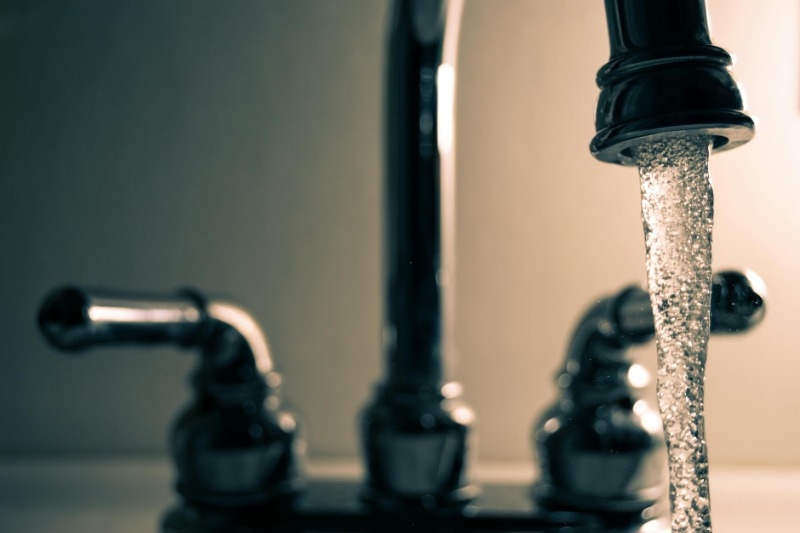What's in your well water?
August 01, 2025
In the South Heartland Health District of Adams, Clay, Nuckolls and Webster Counties, 100% of residents rely on groundwater as their primary source of drinking water, either from their own private wells or through public water systems that serve local communities.
What’s in my water? The drinking water for residents of villages and cities is managed and monitored by each local public water system. Public water systems are required by Nebraska’s Safe Drinking Water Act to test their water regularly and notify residents of violations when any contaminants exceed the designated maximum contaminant levels. The water system operators must provide instructions for alternative water sources while they make improvements or corrections to remove contaminants.
Contaminants include biologicals (e.g., bacteria), inorganic chemicals (e.g., lead and nitrates), organic chemicals (e.g., solvents, fuels, and pesticides), and radiological chemicals (e.g., uranium, strontium, radium and radon). You can read your public water system’s annual Consumer Confidence Report to learn about the quality of your water. You can find the reports for your public water system at epa.gov/ccr.
South Heartland monitors the quality of the drinking water managed by public water systems in our health district by tracking the contaminant violations. In our district, several public water systems have experienced repeated issues with high nitrate levels. At levels higher than the designated maximum contaminant level of 10 milligrams per liter (10 mg/L), public water systems are required to take action to make the water safe for human consumption.
Summary data available from the Nebraska Groundwater Quality Clearinghouse, which includes well water testing results from registered irrigation wells and domestic wells whose owners participate in a voluntary testing program, also indicates areas of our four counties with nitrate levels exceeding the 10 mg/L.
Where do nitrates come from? Nitrates can enter groundwater for various reasons, including naturally occurring processes, fertilizer use in agriculture and turf, livestock operations, septic systems, and storm water runoff. Groundwater might be located a few feet or several hundred feet below the surface. It can actually move through tiny spaces within the soils and rocks below the surface, although much more slowly than in a surface stream or river! But this means that contamination from any source can eventually affect wells that are further away.
Why are nitrates a concern? High nitrates in drinking water can pose health risks for people of all ages. Nitrates are especially harmful to infants under one year old and can cause a serious condition known as methemoglobinemia, or “blue baby syndrome,” which can reduce the blood’s ability to carry oxygen, cause the skin to turn a bluish color, and result in serious illness or death. Bottle-fed babies under six months old are at highest risk for blue baby syndrome.
Pregnant women are another high-risk group that should avoid consuming water high in nitrates.
Other symptoms connected to methemoglobinemia are decreased blood pressure, increased heart rate, headaches, stomach cramps, and vomiting. Emerging research also links long-term nitrate exposure to chronic health conditions, such as certain types of cancer, thyroid disease, and birth defects. The World Health Organization classifies nitrates as "probably carcinogenic to humans."
It isn’t just humans affected by high nitrates. Nitrates higher than 100 mg/L can affect livestock in ways that are similar to the effects on humans. Nitrates can also cause reproductive problems in adult cattle and slow the growth rates of replacement heifers.
If I have a private well, how do I know if my drinking water is safe? Nitrates are invisible, colorless, odorless, and tasteless so contamination is not something you can detect without proper testing. While several types of wells are more susceptible to nitrate contamination, including shallow wells (50 feet or less in depth) and wells constructed prior to 1988 well construction standards, the best way to protect yourself and your family is by testing your private well water for nitrates at least once a year.
Local labs and agencies that offer water testing for nitrates include: South Heartland District Health Department, ServiTech, Culligan, Nebraska DHHS, Central District Health Department, Upper Big Blue NRD, Little Blue NRD. South Heartland is also offering free well water testing for nitrates as part of our partnership with the University of Nebraska–Lincoln’s Citizen Science Project.
What can I do if my drinking water has high nitrate levels? If your nitrate levels are above the action level of 10 mg/L, you could install a point-of-use, certified water treatment system like reverse osmosis, ion exchange, or distillation, which is effective for removing nitrates. Use treated water or bottled water for drinking, cooking, and mixing infant formula. Please note that boiling water, while recommended for removing harmful bacteria, is not effective for removing nitrates, and can actually increase the nitrate concentration.
If you have a private well, and especially if your nitrate levels are above the action level of 10 mg/L, it is important to talk with your health care provider about additional health risks and other potential action steps to protect and improve your family’s health.
You can learn more about what’s in your well water by contacting South Heartland District Health Department (402-462-6211) for more information about local well water testing options, or visit our website for links to additional resources. Some of the information in this article came from the Nebraska Department of Environment and Energy’s Nitrate in Drinking Water Fact Sheet. You can view maps of nitrate testing results and other helpful information in the Nebraska 2024 Groundwater Quality Monitoring Report.
Michele Bever, PhD, MPH, is the executive director for South Heartland District Health Department, serving Adams, Clay, Nuckolls and Webster Counties in Nebraska. She may be reached at 402-462- 6211.
##


 Launch the media gallery 1 player
Launch the media gallery 1 player